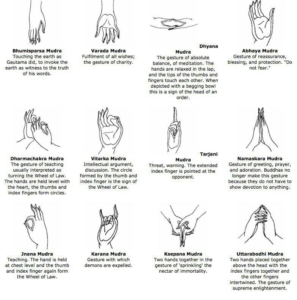In News: Recently,The Archaeological Survey of India (ASI) has unearthed a Buddhist monastery, believed to be at least 900 years old, buried under a mound in a village situated in a hilly area of Hazaribagh district of Jharkhand.
Buddhist monastery found in Jharkhand
- The finding comes two months after the discovery of an ancient Buddhist shrine, buried under a similar mound, barely 100 metres away.
- ASI has excavated 10 stone statues of deity Tara and the Buddha in Burhani village near Juljul Pahar of Sitagarha Hills, around 12 km from district headquarters Hazaribagh.
- ASI found a sculpture which appears to be that of Shaivite deity Maheswari – with a coiled crown and chakra – indicating cultural assimilation in the area.
- Archaeologists said the findings were significant since the monastery is on the old route to Varanasi, 10 km from Sarnath, where the Buddha gave his first sermon.
- They said the presence of statues of deity Tara shows possible proliferation of Vajrayana form of Buddhism in this region.
- ASI in December last year they found a Buddhist shrine with three rooms near agricultural land on the eastern side of Juljul Pahar.
- This is a significant finding in terms of spread of Buddhism in Jharkhand.
Vajrayana
- Vajrayana means the Vehicle of the Thunderbolt.
- Also known as tantric Buddhism or Tibetan Buddhism
- Developed in India in the 5th century C.E.
- Accepted that Vajrayana Buddhism emerged out of the Mahayana in India.
- Vajrayana ritual and devotion employs mantras (esoteric verbal formulas), mandalas (diagrams and paintings used in visualization practices), and a complex array of other rituals.
- The practitioner of the Vajrayana Buddhism takes his or her innate Buddha nature as the means of practice.
Various Mudra of Buddha

Deity Tara
- Tara or Shayama Tara, also known as Jetsun Dolma in Tibetan, Tara Bosatsu in Japan, and as Duoluo Pusa in Chinese Buddhism.
- Important figure in Buddhism, especially revered in Tibetan Buddhism.
- She appears as a female bodhisattva in Mahayana Buddhism, and as a female Buddha in Vajrayana Buddhism.
- She is known as the “mother of liberation”, and represents the virtues of success in work and achievements.
- Tarais a meditation deity revered by practitioners of the Tibetan branch of Vajrayana Buddhism to develop certain inner qualities and to understand outer, inner and secret teachings such as karuṇā (compassion), mettā (loving-kindness), and shunyata (emptiness).
















